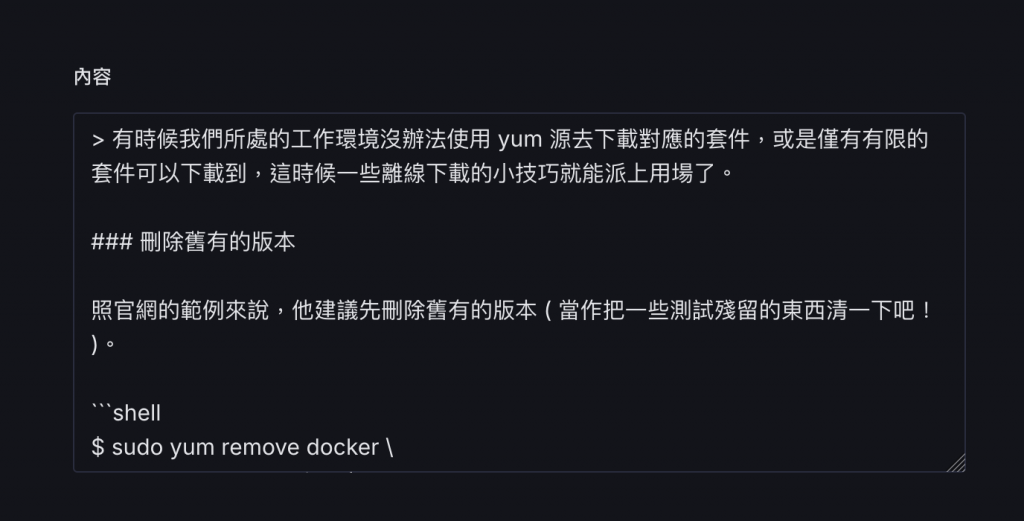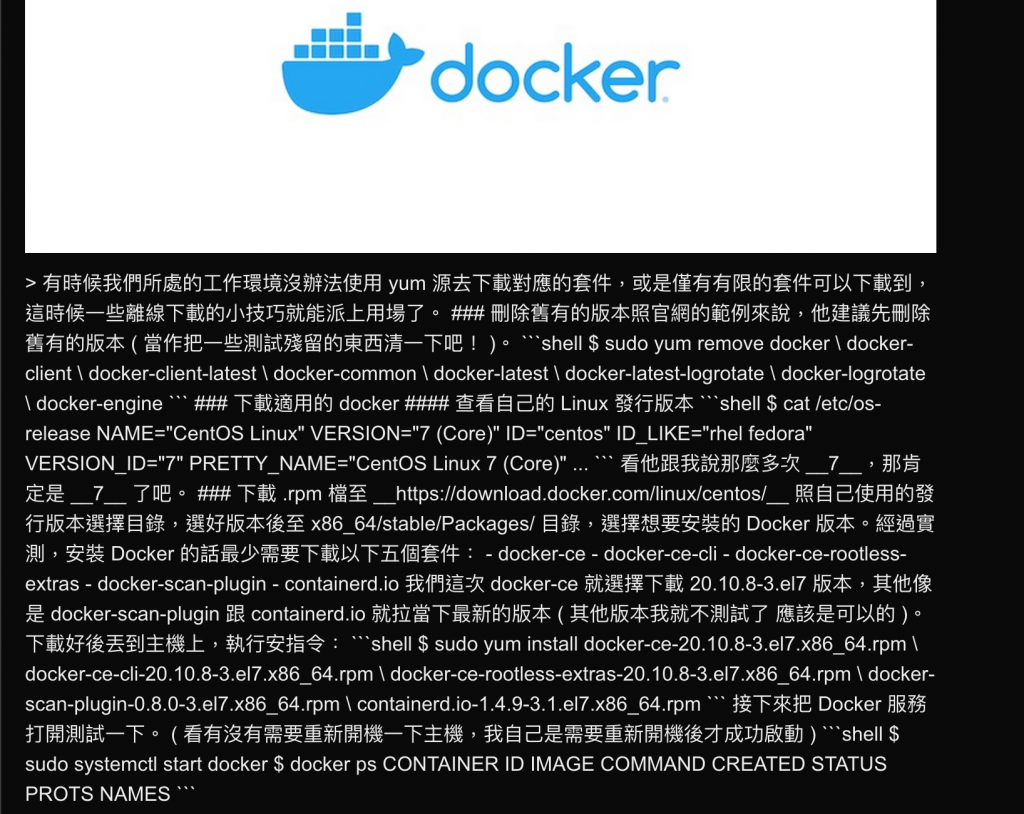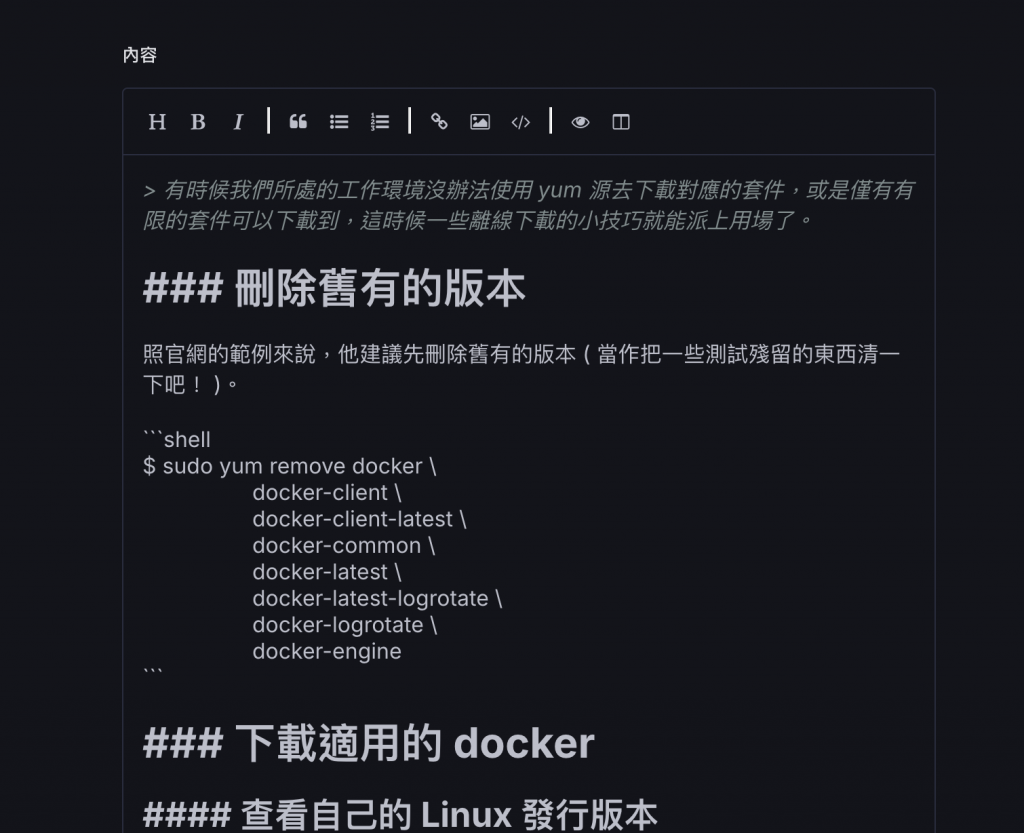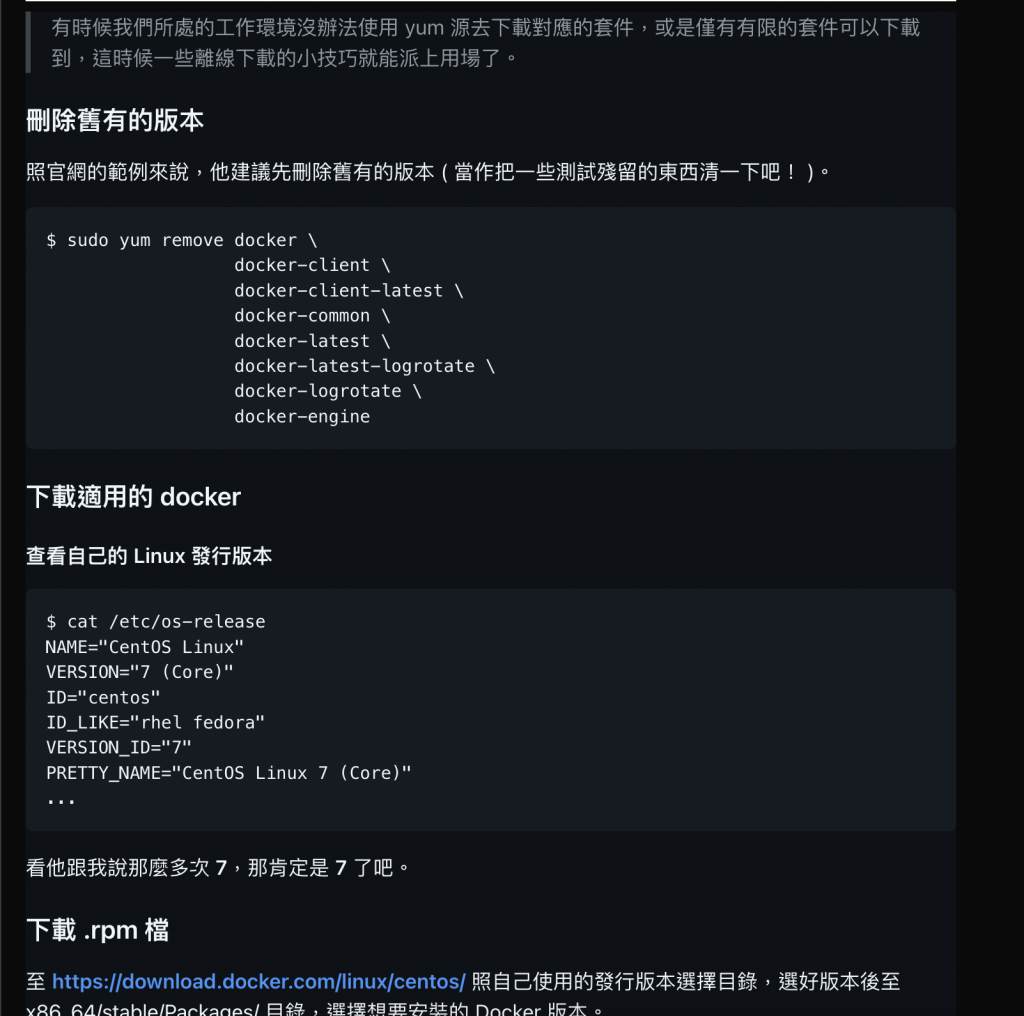前面花了兩篇解決了圖片顯示的問題,接下來來解決文章顯示的問題
現在我們是用 Sanity 預設的 text 型別,並且在裡面存放 markdown 格式的內容,渲染到畫面的時候基本就是像現在這樣,不管是在 Sanity 裡面還是 Next 前端頁面都一樣,完全沒有排版。
import {defineType, defineField} from 'sanity'
import {getImageDimensions, getExtension} from '@sanity/asset-utils'
export default defineType({
name: 'blogPost',
title: 'Blog Post',
type: 'document',
// ...
fields: [
// ...
defineField({
name: 'content',
title: '內容',
type: 'text',
validation: (rule) => rule.required(),
}),
// ...
],
})


一開始先來解決 Sanity 資料欄位問題,現在使用的是 text 型別,但 Markdown 這種被廣泛使用的撞格式有沒有那種專門的型別呢?
答案是有的,就是 sanity-plugin-markdown。
使用上也非常簡單,npm 下載套件後再引入 plugin 後就有markdown 這個型別可以使用了。
npm 下載套件:
npm install --save sanity-plugin-markdown
在 sanity.config.ts 中加入 plugin:
import {markdownSchema} from 'sanity-plugin-markdown'
export default defineConfig({
// ...
plugins: [
structureTool(),
visionTool(),
markdownSchema() // 加入 plugin
],
// ...
})
最後在型別上改成 markdown,就完成了。
defineField({
name: 'content',
title: '內容',
type: 'markdown',
validation: (rule) => rule.required(),
}),

這樣一來在 Sanity 那端,就有基本的排版跟工具列可以用了。
在 Next.js 前端顯示 Markdown 內容選用的 react-markdown, remark-gfm, rehype-highlight, github-markdown-css。
功能分別是:
<code></code> 的內容,有一些基本樣式。這邊就不展開講 unified, remark, rehype 這些了,比較不是這裡的重點。
在 Next.js 建立一個叫 MarkdownBlock 的 Component:
// app/components/MarkdownBlock.tsx
import ReactMarkdown from "react-markdown";
import remarkGfm from "remark-gfm";
import rehypeHighlight from "rehype-highlight";
import "github-markdown-css/github-markdown-dark.css";
export default function MarkdownBlock({
content,
}: Readonly<{ content: string }>) {
return (
<ReactMarkdown
className="markdown-body"
remarkPlugins={[remarkGfm]}
rehypePlugins={[rehypeHighlight]}
>
{content}
</ReactMarkdown>
);
}
接著引入就可以直接使用了~~
// ...
export default async function Post({ params }: { params: { slug: string } }) {
// ...
return (
<div className="post max-w-screen-md p-5">
{/* ... */}
<MarkdownBlock content={post.content} />
</div>
);
}

這樣內容就都出來了~
